







































































La Pedrera, Rocha, Uruguay
Agent: Cliff Jacobs - Managing Principal Estate Agent & CEO (Nat.Dpl.Hotel Man (UJ). M.P.R.E.)
Agent Cellphone: +27 (0) 84 413 1071 / +27 (0) 61 716 6951
Agent Office Number: +27 (0) 84 413 1071
Agent Email Address: cliff@exquisitehotelconsultants.com
Type: Beach Resort
Bedrooms: 15
Bathrooms: 15
Showers: 15
Parking: 20
Yield: Not Disclosed
TGCSA Rating:

Pedrera, Rocha
La Pedrera is a village and resort on the Atlantic Coast in the Rocha Department of Uruguay. It is located on Route 10, about 8 kilometres (5.0 mi) northeast of La Paloma. Although it has a very small permanent population, in summer it is an important coastal resort. La Pedrera is also famous for its proximity to the Valle de la Luna, which extends to Santa Isabel de la Pedrera.
Population
In 2011 La Pedrera had a population of 225 permanent inhabitants and 753 dwellings.
Rocha, Uruguay
Location and geography
The city is located on the intersection of Route 9 with Route 15, about 70 kilometres (43 mi) northeast of San Carlos of Maldonado Department. The stream Arroyo Rocha flows along the west limits of the city.
History
It was founded in 1793 and had acquired the status of "Villa" (town) before the Independence of Uruguay. On 7 July 1880, it was made capital of the Department of Rocha by the Act of Ley Nº 1.474, while its status was elevated to "Ciudad" (city) on 10 January 1894 by the Act of Ley Nº 2.252.[1]
Rocha department features in Carlos Maria Dominguez's 2004 novel Casa de Papel (TRS English, 2005, The house of paper). The narrator visits the ruins of a house of books ergo, 'house of paper' which had been built and then destroyed by an obsessive book collector on the sand spit separating Rocha lagoon from the ocean.
Population
In 2011 Rocha had a population of 25,422.
Transportation
Rocha is on the main road from Montevideo to the border with Brazil. Buses connect it to Montevideo. The rail station was closed in the 1980s. There is a small local airfield. There are plans to improve the local infrastructure substantially. The major project planned is to build a deep water port in or near La Paloma. There are also plans to build an airport to bring in tourism, for example, Rocha's lagoon has a circular bridge especially for it.
Places of worship
Climate
Rocha has a mild humid subtropical climate (Cfa, according to the Köppen climate classification), with pleasant summers and cool winters. It was oceanic (Cfb) before the current climatic table (1961-1990 period). The precipitation is evenly distributed throughout the year, with an average of 1,123 mm (44.21 in). The hottest month, January, has an average temperature of 22.5 °C (72.5 °F), and the coldest month, July, has an average of 11.2 °C (52.2 °F). The average yearly temperature is 16.8 °C (62.2 °F).
Uruguay
Uruguay, officially the Oriental Republic of Uruguay, is a country in South America. It shares borders with Argentina to its west and southwest and Brazil to its north and northeast; while bordering the Río de la Plata to the south and the Atlantic Ocean to the southeast. Uruguay covers an area of approximately 176,000 square kilometers (68,000 sq mi) and has a population of an estimated 3.51 million, of whom 2 million live in the metropolitan area of its capital and largest city, Montevideo.
The area that became Uruguay was first inhabited by groups of hunter-gatherers 13,000 years ago, the predominant tribe at the moment of the arrival of Europeans was the Charrúa people, when the Portuguese first established Colónia do Sacramento in 1680; Uruguay was colonized by Europeans relatively late compared with neighboring countries. Montevideo was founded as a military stronghold by the Spanish in the early 18th century, signifying the competing claims over the region. Uruguay won its independence between 1811 and 1828, following a four-way struggle between Portugal and Spain, and later Argentina and Brazil. It remained subject to foreign influence and intervention throughout the 19th century, with the military playing a recurring role in domestic politics. A series of economic crises put an end to a democratic period that had begun in the early 20th century, culminating in a 1973 coup, which established a civic-military dictatorship. The military government persecuted leftists, socialists, and political opponents, resulting in several deaths and numerous instances of torture by the military; the military relinquished power to a civilian government in 1985. Uruguay is today a democratic constitutional republic, with a president who serves as both head of state and head of government.
Uruguay has a high-income economy, and is ranked first in Latin America in democracy, peace, low perception of corruption, e-government, and is first in South America when it comes to press freedom, size of the middle class, and prosperity. On a per-capita basis, Uruguay contributes more troops to United Nations peacekeeping missions than any other country. It is the lowest ranking South American nation in the Global Terrorism Index, and ranks second in the continent on economic freedom, income equality, per-capita income, and inflows of FDI. Uruguay is the third-best country on the continent in terms of Human Development Index, GDP growth, innovation, and infrastructure. Uruguay is regarded as one of the most socially progressive countries in Latin America. It ranks high on global measures of personal rights, tolerance, and inclusion issues, including its acceptance of the LGBT community. The country has legalized cannabis, while same-sex marriage and abortion are also legal. Uruguay is a founding member of the United Nations, OAS, Mercosur and the Non-Aligned Movement.
Etymology
The country name of Uruguay derives from the namesake Río Uruguay, from the indigenous Guaraní language. There are several interpretations, including "bird-river" ("the river of the urú", via Charruan, urú being a common noun of any wild fowl). The name could also refer to a river snail called uruguá (Pomella megastoma) that was plentiful across its shores.
One of the most popular interpretations of the name was proposed by the renowned Uruguayan poet Juan Zorrilla de San Martín, "the river of painted birds"; this interpretation, although dubious, still holds an important cultural significance in the country.
In Spanish colonial times, and for some time thereafter, Uruguay and some neighboring territories were called Banda Oriental [del Uruguay] ("Eastern Bank [of the Uruguay River]"), then for a few years the "Eastern Province". Since its independence, the country has been known as "República Oriental del Uruguay", which literally translates to "Eastern Republic of the Uruguay [River]". However, it is commonly translated either as the "Oriental Republic of Uruguay" or the "Eastern Republic of Uruguay".
History
Pre-colonial
Uruguay was first inhabited around 13,000 years ago by Hunter-gatherers. It is estimated that at the time of the first contact with Europeans in the 16th century there were about 9,000 Charrúa and 6,000 Chaná and some Guaraní island settlements.
There is an extensive group of thousands of man-made tumuli known as "Pechito Paloma" in the eastern part of the country, some of them dating back to 5,000 years ago, yet very little is known about the people who built them as they left no written record, evidence was found of agriculture and domesticated dogs.
In 1831 Fructuoso Rivera, Uruguay's first president, organized the final strike of the Charrua genocide, eradicating the last remnants of the Uruguayan native population.
Early colonization
The Portuguese were the first Europeans to enter the region of present-day Uruguay in 1512. The Spanish arrived in present-day Uruguay in 1516. The indigenous peoples' fierce resistance to conquest, combined with the absence of gold and silver, limited their settlement in the region during the 16th and 17th centuries. Uruguay then became a zone of contention between the Spanish and Portuguese empires. In 1603, the Spanish began to introduce cattle, which became a source of wealth in the region. The first permanent Spanish settlement was founded in 1624 at Soriano on the Río Negro. In 1669–71, the Portuguese built a fort at Colonia del Sacramento.
Montevideo was founded by the Spanish in the early 18th century as a military stronghold in the country. Its natural harbor soon developed into a commercial area competing with Río de la Plata's capital, Buenos Aires. Uruguay's early 19th-century history was shaped by ongoing fights for dominance in the Platine region, between British, Spanish, Portuguese and other colonial forces. In 1806 and 1807, the British army attempted to seize Buenos Aires and Montevideo as part of the Napoleonic Wars. Montevideo was occupied by a British force from February to September 1807.
Independence struggle
In 1811, José Gervasio Artigas, who became Uruguay's national hero, launched a successful revolt against the Spanish authorities, defeating them on 18 May at the Battle of Las Piedras.
In 1813, the new government in Buenos Aires convened a constituent assembly where Artigas emerged as a champion of federalism, demanding political and economic autonomy for each area, and for the Banda Oriental in particular. The assembly refused to seat the delegates from the Banda Oriental, however, and Buenos Aires pursued a system based on unitary centralism.
As a result, Artigas broke with Buenos Aires and besieged Montevideo, taking the city in early 1815.[30] Once the troops from Buenos Aires had withdrawn, the Banda Oriental appointed its first autonomous government. Artigas organized the Federal League under his protection, consisting of six provinces, four of which later became part of Argentina.
In 1816, a force of 10,000 Portuguese troops invaded the Banda Oriental from Brazil; they took Montevideo in January 1817. After nearly four more years of struggle, the Portuguese Kingdom of Brazil annexed the Banda Oriental as a province under the name of "Cisplatina". The Brazilian Empire became independent of Portugal in 1822. In response to the annexation, the Thirty-Three Orientals, led by Juan Antonio Lavalleja, declared independence on 25 August 1825 supported by the United Provinces of the Río de la Plata (present-day Argentina). This led to the 500-day-long Cisplatine War. Neither side gained the upper hand and in 1828 the Treaty of Montevideo, fostered by the United Kingdom through the diplomatic efforts of Viscount John Ponsonby, gave birth to Uruguay as an independent state. 25 August is celebrated as Independence Day, a national holiday. The nation's first constitution was adopted on 18 July 1830.
19th century
At the time of independence, Uruguay had an estimated population of just under 75,000. The era from independence until 1904 was marked by regular military conflicts and civil wars between the Blanco and Colorado Parties. The political scene in Uruguay became split between two parties: the conservative Blancos (Whites) headed by the second President Manuel Oribe, representing the agricultural interests of the countryside; and the liberal Colorados (Reds) led by the first President Fructuoso Rivera, representing the business interests of Montevideo. The Uruguayan parties received support from warring political factions in neighboring Argentina, which became involved in Uruguayan affairs.
The Colorados favored the exiled Argentine liberal Unitarios, many of whom had taken refuge in Montevideo while the Blanco president Manuel Oribe was a close friend of the Argentine ruler Manuel de Rosas. On 15 June 1838, an army led by the Colorado leader Rivera overthrew President Oribe, who fled to Argentina. Rivera declared war on Rosas in 1839. The conflict would last 13 years and become known as the Guerra Grande (the Great War).
In 1843, an Argentine army overran Uruguay on Oribe's behalf but failed to take the capital. The siege of Montevideo, which began in February 1843, would last nine years. The besieged Uruguayans called on resident foreigners for help, which led to a French and an Italian legion being formed, the latter led by the exiled Giuseppe Garibaldi.
In 1845, Britain and France intervened against Rosas to restore commerce to normal levels in the region. Their efforts proved ineffective and, by 1849, tired of the war, both withdrew after signing a treaty favorable to Rosas. It appeared that Montevideo would finally fall when an uprising against Rosas, led by Justo José de Urquiza, governor of Argentina's Entre Ríos Province, began. The Brazilian intervention in May 1851 on behalf of the Colorados, combined with the uprising, changed the situation and Oribe was defeated. The siege of Montevideo was lifted and the Guerra Grande finally came to an end.[33] Montevideo rewarded Brazil's support by signing treaties that confirmed Brazil's right to intervene in Uruguay's internal affairs.
In accordance with the 1851 treaties, Brazil intervened militarily in Uruguay as often as it deemed necessary. In 1865, the Triple Alliance was formed by the emperor of Brazil, the president of Argentina, and the Colorado general Venancio Flores, the Uruguayan head of government whom they both had helped to gain power. The Triple Alliance declared war on the Paraguayan leader Francisco Solano López and the resulting Paraguayan War ended with the invasion of Paraguay and its defeat by the armies of the three countries. Montevideo, which was used as a supply station by the Brazilian navy, experienced a period of prosperity and relative calm during the war.
The constitutional government of General Lorenzo Batlle y Grau (1868–72) suppressed the Revolution of the Lances by the Blancos. After two years of struggle, a peace agreement was signed in 1872 that gave the Blancos a share in the emoluments and functions of government, through control of four of the departments of Uruguay.
This establishment of the policy of co-participation represented the search for a new formula of compromise, based on the coexistence of the party in power and the party in opposition.
Despite this agreement, Colorado rule was threatened by the failed Tricolor Revolution in 1875 and the Revolution of the Quebracho in 1886.
The Colorado effort to reduce Blancos to only three departments caused a Blanco uprising of 1897, which ended with the creation of 16 departments, of which the Blancos now had control over six. Blancos were given ⅓ of seats in Congress. -This division of power lasted until the President Jose Batlle y Ordonez instituted his political reforms which caused the last uprising by Blancos in 1904 that ended with the Battle of Masoller and the death of Blanco leader Aparicio Saravia.
Between 1875 and 1890, the military became the center of power. During this authoritarian period, the government took steps toward the organization of the country as a modern state, encouraging its economic and social transformation. Pressure groups (consisting mainly of businessmen, hacendados, and industrialists) were organized and had a strong influence on government. A transition period (1886–90) followed, during which politicians began recovering lost ground and some civilian participation in government occurred.
After the Guerra Grande, there was a sharp rise in the number of immigrants, primarily from Italy and Spain. By 1879, the total population of the country was over 438,500. The economy reflected a steep upswing (if demonstrated graphically, above all other related economic determinants), in livestock raising and exports. Montevideo became a major economic center of the region and an entrepôt for goods from Argentina, Brazil and Paraguay.
20th century
The Colorado leader José Batlle y Ordóñez was elected president in 1903. The following year, the Blancos led a rural revolt and eight bloody months of fighting ensued before their leader, Aparicio Saravia, was killed in battle. Government forces emerged victorious, leading to the end of the co-participation politics that had begun in 1872. Batlle had two terms (1903–07 and 1911–15) during which, taking advantage of the nation's stability and growing economic prosperity, he instituted major reforms, such as a welfare program, government participation in many facets of the economy, and a plural executive.
Gabriel Terra became president in March 1931. His inauguration coincided with the effects of the Great Depression, and the social climate became tense as a result of the lack of jobs. There were confrontations in which police and leftists died. In 1933, Terra organized a coup d'état, dissolving the General Assembly and governing by decree. A new constitution was promulgated in 1934, transferring powers to the president. In general, the Terra government weakened or neutralized economic nationalism and social reform.
In 1938, general elections were held and Terra's brother-in-law, General Alfredo Baldomir, was elected president. Under pressure from organized labor and the National Party, Baldomir advocated free elections, freedom of the press, and a new constitution. Although Baldomir declared Uruguay neutral in 1939, British warships and the German ship Admiral Graf Spee fought a battle not far off Uruguay's coast. The Admiral Graf Spee took refuge in Montevideo, claiming sanctuary in a neutral port, but was later ordered out.
In the late 1950s, partly because of a worldwide decrease in demand for Uruguayan agricultural products, Uruguayans suffered from a steep drop in their standard of living, which led to student militancy and labor unrest. An armed group, known as the Tupamaros emerged in the 1960s, engaging in activities such as bank robbery, kidnapping and assassination, in addition to attempting an overthrow of the government.
Civic-military and Dictatorship regime
President Jorge Pacheco declared a state of emergency in 1968, followed by a further suspension of civil liberties in 1972. In 1973, amid increasing economic and political turmoil, the armed forces, asked by the President Juan María Bordaberry, closed the Congress and established a civilian-military regime. An alleged CIA-backed campaign of political repression and state terror involving intelligence operations and assassination of opponents. According to one source, around 200 Uruguayans are known to have been killed and disappeared, with hundreds more illegally detained and tortured during the 12-year civil-military rule of 1973 to 1985. Most were killed in Argentina and other neighboring countries, with 36 of them having been killed in Uruguay. According to Edy Kaufman (cited by David Altman), Uruguay at the time had the highest per capita number of political prisoners in the world. "Kaufman, who spoke at the U.S. Congressional Hearings of 1976 on behalf of Amnesty International, estimated that one in every five Uruguayans went into exile, one in fifty were detained, and one in five hundred went to prison (most of them tortured)."
Return to democracy (1984–present)
A new constitution, drafted by the military, was rejected in a November 1980 referendum.[29] Following the referendum, the armed forces announced a plan for the return to civilian rule, and national elections were held in 1984. Colorado Party leader Julio María Sanguinetti won the presidency and served from 1985 to 1990. The first Sanguinetti administration implemented economic reforms and consolidated democracy following the country's years under military rule.
The National Party's Luis Alberto Lacalle won the 1989 presidential election and amnesty for human rights abusers was endorsed by referendum. Sanguinetti was then re-elected in 1994. Both presidents continued the economic structural reforms initiated after the reinstatement of democracy and other important reforms were aimed at improving the electoral system, social security, education, and public safety.
The 1999 national elections were held under a new electoral system established by a 1996 constitutional amendment. Colorado Party candidate Jorge Batlle, aided by the support of the National Party, defeated Broad Front candidate Tabaré Vázquez. The formal coalition ended in November 2002, when the Blancos withdrew their ministers from the cabinet, although the Blancos continued to support the Colorados on most issues. Low commodity prices and economic difficulties in Uruguay's main export markets (starting in Brazil with the devaluation of the real, then in Argentina in 2002), caused a severe recession; the economy contracted by 11%, unemployment climbed to 21%, and the percentage of Uruguayans in poverty rose to over 30%. In 2004, Uruguayans elected Tabaré Vázquez as president, while giving the Broad Front a majority in both houses of Parliament. Vázquez stuck to economic orthodoxy. As commodity prices soared and the economy recovered from the recession, he tripled foreign investment, cut poverty and unemployment, cut public debt from 79% of GDP to 60%, and kept inflation steady.
In 2009, José Mujica, a former left-wing guerrilla leader (Tupamaros) who spent almost 15 years in prison during the country's military rule, emerged as the new president as the Broad Front won the election for a second time. Abortion was legalized in 2012, followed by same-sex marriage and cannabis in the following year.
In 2014, Tabaré Vázquez was elected to a non-consecutive second presidential term, which began on 1 March 2015. In 2020, he was succeeded by Luis Alberto Lacalle Pou, member of the conservative National Party, after 15 years of left-wing rule, as the 42nd President of Uruguay.
Foreign relations
Argentina and Brazil are Uruguay's most important trading partners: Argentina accounted for 20% of total imports in 2009.[21] Since bilateral relations with Argentina are considered a priority, Uruguay denies clearance to British naval vessels bound for the Falkland Islands and prevents them from calling in at Uruguayan territories and ports for supplies and fuel.[73] A rivalry between the port of Montevideo and the port of Buenos Aires, dating back to the times of the Spanish Empire, has been described as a "port war". Officials of both countries emphasized the need to end this rivalry in the name of regional integration in 2010.
Construction of a controversial pulp paper mill in 2007, on the Uruguayan side of the Uruguay River, caused protests in Argentina over fears that it would pollute the environment and lead to diplomatic tensions between the two countries. The ensuing dispute remained a subject of controversy into 2010, particularly after ongoing reports of increased water contamination in the area were later proven to be from sewage discharge from the town of Gualeguaychú in Argentina. In November 2010, Uruguay and Argentina announced they had reached a final agreement for joint environmental monitoring of the pulp mill.
Brazil and Uruguay have signed cooperation agreements on defense, science, technology, energy, river transportation and fishing, with the hope of accelerating political and economic integration between these two neighbouring countries. Uruguay has two uncontested boundary disputes with Brazil, over Isla Brasilera and the 235 km2 (91 sq mi) Invernada River region near Masoller. The two countries disagree on which tributary represents the legitimate source of the Quaraí/Cuareim River, which would define the border in the latter disputed section, according to the 1851 border treaty between the two countries.[21] However, these border disputes have not prevented both countries from having friendly diplomatic relations and strong economic ties. So far, the disputed areas remain de facto under Brazilian control, with little to no actual effort by Uruguay to assert its claims.
Uruguay has enjoyed friendly relations with the United States since its transition back to democracy. Commercial ties between the two countries have expanded substantially in recent years, with the signing of a bilateral investment treaty in 2004 and a Trade and Investment Framework Agreement in January 2007. The United States and Uruguay have also cooperated on military matters, with both countries playing significant roles in the United Nations Stabilization Mission in Haiti.
President Mujica backed Venezuela's bid to join Mercosur. Venezuela has a deal to sell Uruguay up to 40,000 barrels of oil a day under preferential terms.
On 15 March 2011, Uruguay became the seventh South American nation to officially recognize a Palestinian state, although there was no specification for the Palestinian state's borders as part of the recognition. In statements, the Uruguayan government indicated its firm commitment to the Middle East peace process, but refused to specify borders "to avoid interfering in an issue that would require a bilateral agreement".
In March 2020, Uruguay rejoined the Inter-American Treaty of Reciprocal Assistance (TIAR or "Rio Pact"). In September 2019, the previous left-wing government of Uruguay had withdrawn from TIAR as a response to the very critical view of Venezuela the other members of the regional defense agreement had.
Economy
Uruguay experienced a major economic and financial crisis between 1999 and 2002, principally a spillover effect from the economic problems of Argentina. The economy contracted by 11%, and unemployment climbed to 21%. Despite the severity of the trade shocks, Uruguay's financial indicators remained more stable than those of its neighbours, a reflection of its solid reputation among investors and its investment-grade sovereign bond rating, one of only two in South America.
In 2004, the Batlle government signed a three-year $1.1 billion stand-by arrangement with the International Monetary Fund (IMF), committing the country to a substantial primary fiscal surplus, low inflation, considerable reductions in external debt, and several structural reforms designed to improve competitiveness and attract foreign investment.[47] Uruguay terminated the agreement in 2006 following the early repayment of its debt but maintained a number of the policy commitments.
Vázquez, who assumed the government in March 2005, created the Ministry of Social Development and sought to reduce the country's poverty rate with a $240 million National Plan to Address the Social Emergency (PANES), which provided a monthly conditional cash transfer of approximately $75 to over 100,000 households in extreme poverty. In exchange, those receiving the benefits were required to participate in community work, ensure that their children attended school daily, and had regular health check-ups.
Following the 2001 Argentine credit default, prices in the Uruguayan economy made a variety of services, including information technology and architectural expertise, once too expensive in many foreign markets, exportable. The Frente Amplio government, while continuing payments on Uruguay's external debt, also undertook an emergency plan to attack the widespread problems of poverty and unemployment.The economy grew at an annual rate of 6.7% during the 2004–2008 period. Uruguay's exports markets have been diversified to reduce dependency on Argentina and Brazil. Poverty was reduced from 33% in 2002 to 21.7% in July 2008, while extreme poverty dropped from 3.3% to 1.7%.
Between the years 2007 and 2009, Uruguay was the only country in the Americas that did not technically experience a recession (two consecutive downward quarters). Unemployment reached a record low of 5.4% in December 2010 before rising to 6.1% in January 2011. While unemployment is still at a low level, the IMF observed a rise in inflationary pressures, and Uruguay's GDP expanded by 10.4% for the first half of 2010.
According to IMF estimates, Uruguay was likely to achieve growth in real GDP of between 8% and 8.5% in 2010, followed by 5% growth in 2011 and 4% in subsequent years. Gross public sector debt contracted in the second quarter of 2010, after five consecutive periods of sustained increase, reaching $21.885 billion US dollars, equivalent to 59.5% of the GDP. Uruguay was ranked 69th in the Global Innovation Index in 2020, down from 62nd in 2019.
The growth, use, and sale of cannabis was legalized on 11 December 2013, making Uruguay the first country in the world to fully legalize marijuana. The law was voted at the Uruguayan Senate on the same date with 16 votes to approve it and 13 against.
Agriculture
In 2010, Uruguay's export-oriented agricultural sector contributed to 9.3% of the GDP and employed 13% of the workforce. Official statistics from Uruguay's Agriculture and Livestock Ministry indicate that meat and sheep farming in Uruguay occupies 59.6% of the land. The percentage further increases to 82.4% when cattle breeding is linked to other farm activities such as dairy, forage, and rotation with crops such as rice.
According to FAOSTAT, Uruguay is one of the world's largest producers of soybeans (9th), greasy wool (12th), horse meat (14th), beeswax (14th), and quinces (17th). Most farms (25,500 out of 39,120) are family-managed; beef and wool represent the main activities and main source of income for 65% of them, followed by vegetable farming at 12%, dairy farming at 11%, hogs at 2%, and poultry also at 2%. Beef is the main export commodity of the country, totaling over US$1 billion in 2006.
In 2007, Uruguay had cattle herds totalling 12 million head, making it the country with the highest number of cattle per capita at 3.8.However, 54% is in the hands of 11% of farmers, who have a minimum of 500 head. At the other extreme, 38% of farmers exploit small lots and have herds averaging below one hundred head.
Tourism
The tourism industry in Uruguay is an important part of its economy. In 2012 the sector was estimated to account for 97,000 jobs and (directly and indirectly) 9% of GDP.
In 2013, 2.8 million tourists entered Uruguay, of whom 59% came from Argentina and 14% from Brazil, with Chileans, Paraguayans, North Americans and Europeans accounting for most of the remainder.
Cultural experiences in Uruguay include exploring the country's colonial heritage, as found in Colonia del Sacramento. Montevideo, the country's capital, houses the most diverse selection of cultural activities. Historical monuments such as Torres Garcia Museum as well as Estadio Centenario, which housed the first world cup in history, are examples. However, simply walking the streets allows tourists to experience the city's colorful culture.
One of the main natural attractions in Uruguay is Punta del Este. Punta del Este is situated on a small peninsula off the southeast coast of Uruguay. Its beaches are divided into Mansa, or tame (river) side and Brava, or rugged (ocean) side. The Mansa is more suited for sunbathing, snorkeling, & other low-key recreational opportunities, while the Brava is more suited for adventurous sports, such as surfing. Punta del Este adjoins the city of Maldonado, while to its northeast along the coast are found the smaller resorts of La Barra and José Ignacio.
Description By The Owner
Our lovely boutique hotel is a 15-room, 2-story boutique hotel located in the heart of Uruguay's coastal town of La Pedrera. The property is set in a great position on the highest point in town with sweeping expansive views of the seductive Atlantic Ocean, open skies and breathtaking views of miles of unspoiled beaches all the way to Cabo Polonio National Park.
Selected noteworthy Reviews on international press:
Our boutique hotel resort was the first pension in La Pedrera built more than 100 years ago. Its renovation was an overhaul, it lasted 14 months and built anew 11,000 sq. feet in an approximately 14,000 sq. feet lot; the project was a success as it brought together memories of a humble colonial past with a new disposition towards comfort and space.
The new construction spreads over two levels holding 14 of the 15 guest rooms, the reception, the lounge, the kitchen, a BBQ bar covered area and the public bathrooms. An additional detached building holds one additional guest room, the office, and the storage machine room.
In late 2018 plans were approved for the construction of two large additional master rooms on the second floor, they would be located above the lounge facing the sea bringing the total number of rooms to 17. Currently, our boutique hotel’s maximum occupancy is 34 guests.
We have 15 luminous spacious guest rooms, appointed with mid-century finds and local artisan furniture, keeping both elegances as well as comfort in mind. On average rooms run between 320 and 480 sq. feet; upper floor rooms have exceptional views private terraces, garden rooms each have a private outdoor sitting area around the garden the pool.
All guest rooms have wooden floors, bathrooms have large showers and colonial tiled floors. Every guest room is equipped with A\/C, safe deposit luxurious spring box beds upholstered in soft leather. Linens are 100% Egyptian cotton, including bath towels bathrobes. Each room has an electric kettle, a water filter, a mini-fridge glassware. There are also beach towels, hats, a beach bag beach chairs in each room.
Guest Facilities On-Site
Attractions For Guests In The Local Area
Owner Facilities On-Site
In summer La Pedrera sports are some of the coolest places to eat; the village is small but with all you need. There are great views from above the rocky cliffs, overlooking the ocean, with two very long and beautiful beaches on either side of the cliffs. One has smaller waves and is suitable for children and the other is a surfers' paradise. During the high season La Pedrera can be quite busy, but off-season it is very "tranquilo" - perfect for those who love serenity or are looking to disconnect from the world.
OUR ROOMS
ALL OUR ROOMS ARE SPACIOUS AND BRIGHT, EACH ONE HAS A PRIVATE OUTDOOR SPACE, MAKING OUR BOUTIQUE HOTEL A COMFORTABLE AND SAFE DESTINATION DURING A HEALTH EMERGENCY.
MASTER SUITES
The MASTER rooms are unique. Located in the corners of the upper floor, the two command incredible views from their large windows & terraces.
Note: Master EAST is the closest to the sea, MASTER West is the widest. We take your preference into consideration but we cannot always guarantee which of the two Masters will be assigned, it will depend on availability and length of stay.
BAHIA SUITES
From the top floor, BAHIA SUITES command spectacular views of the bay and the sea to Cabo Polonio. Each has a private terrace. We have 4 of them without guaranteeing which of them will be assigned based on availability.
GARDEN SUITES
The GARDEN suites are located around the garden & pool. Spacious and with the same services as upstairs GARDEN suites have a private outdoor space equipped for relaxation! Ideal for couples or families with little ones.
OUR SERVICES
THIS HOTEL RESORT IS AN OASIS BY THE SEA: LOCATED METRES FROM THE BEACH AND METERS FROM THE MAIN STREET, IT HAS A SWIMMING POOL AND INDOOR GARDENS PROTECTED FROM THE WINDS OF ROCHE.
Activities
DAY TRIPS
LA PEDRERA IS THE PERFECT CENTER FOR ADVENTURE AND BRISAS IS YOUR MOST ELEGANT CHOICE FOR A BASE. THERE ARE MANY DAY TRIPS WITHIN A REASONABLE DISTANCE, FOLLOWING OUR TOP RECOMMENDATIONS.
The coast of Rocha features long stretches of wide unspoiled beaches, rugged and dramatic landscapes, crags and large sand dunes created by the winds from the South Atlantic Ocean, interspersed with peaceful fishing villages. The coastline also has large freshwater lagoons, which together with unspoiled beaches offer a unique combination of freshwater and marine ecosystems.
THE TRAILS WILL TAKE YOU THROUGH THICK MOUNTAINS, AN IMMENSE LAGOON, SPRINGS THAT FLOW FROM THE HIGH DUNES. WHEN CROSSING THE STREAM YOU WILL WALK THROUGH LARGE SANDY AREAS WHERE CENTURIES AGO THE NATIVES ALSO KNEW HOW TO WALK. YOU WILL ENJOY THE BEAUTIFUL POSTCARDS THAT CERRO DE LA BUENA VISTA OFFERS YOU AND ALL THE WAY TO THE CAPE ON THE SHORES OF THE ATLANTIC OCEAN. A VARIETY OF FAUNA AND FLORA WILL ACCOMPANY YOU ALONG THE TRAILS.
IDEAL TO ENJOY WITH FAMILY, FRIENDS OR SIMPLY ALONE. WALKING, JOGGING, CYCLING, OR HORSEBACK RIDING. A RIDE SUITABLE FOR ALL AGES!
CAPE POLONIO
Do not miss this unique city by the sea, enjoy its beaches, small picturesque restaurants (we recommend La Perla del Cabo), the large colony of sea lions and its historic lighthouse. The Cabo Polonio National Park is an area of great natural beauty, there are no roads that lead to it and it is located about 7 km from the main road. It can be accessed by walking through the dunes (only for the most daring), or in 4x4 vehicles that, in summer, run on time all day. You can check the schedule upon arrival. The adventure begins the moment you leave your car and get on a big truck that takes you through the dunes. As there are no hat trees, good sun protection and long-sleeved shirts are a must.
HIKING THE SAND DUNES
Coastal Rocha features long stretches of wide, unspoiled sandy beaches, rugged and spectacular landscapes: rocky cliffs and large sand dunes created by the winds from the South Atlantic Ocean, interspersed with rolling grasslands and sleepy fishing villages. Valizas, a hippie town not far from La Pedrera, is home to the highest sand dunes in the area, up to 20 meters high.
ROCHA LAGOON
Rocha's coastal coastline also features a number of large freshwater lakes, which together with unspoiled beaches offer a unique mix of intact freshwater and marine ecosystems. Do not miss a walk through the lagoon and nothing where it meets the sea. Eat at the fishermen's place, fresh crab, lagoon shrimp and silverside.
HORSEBACK RIDING
Did you know that there are 3 horses per person in Uruguay? It's still commonly used as basic transportation and you can't go wrong trying to travel. No or little experience? Don't worry, we will guide you to the best, be it on the beach or in the hills, you will love it! If your stay coincides, don't miss a ride on a full moon!
OMBUES FOREST
The Monte de Ombúes is a natural paradise in our country, a dreamed space of more than 20 km, surrounded by the Laguna de Castillos and crossed by the Arroyo Valizas, where the predominant plant species is the Ombú. The Olivera family, now in its sixth generation, is in charge of preserving the existence of the mountain in the Rincón de los Olivera. Since colonial times, they have been carrying out conservation and recovery work on Monte de Ombúes, so that this pearl of nature is there immaculate as it was centuries ago. This entire area is the natural habitat of various species of native animals and plants, which is why it was declared a flora and fauna reserve area in 1966.
SANTA TERESA NATIONAL PARK & FORTRESS
One day visit to the National Park and Fort of Santa Teresa. In impeccable shape, this fort is worth a visit and is close to long and beautiful beaches within the national park. The driving time from La Pedrera is 60 minutes (located past the entrance to Punta del Diablo).
In La Tahona, where the community spirit is cultivated in the heart of the mountains, the "Celebration of the Full Moon" is held, a party whose slogan is to see the moon rise behind the majestic mountains, to the beat of the music, with stove and vegetarian kitchen. Riding a bicycle, horseback, touring the mountains are all activities that will leave you astonished.
GOURMET
CULINARY EXPERIENCES
3 CULINARY EXPERIENCES IN ROCHA: SOPHISTICATED, BOHEMIAN CHIC & RURAL. MORE, OTHER RECOMMENDATIONS IN LA PEDRERA AND SURROUNDINGS.
CHEZ SILVIA, BOHEMIAN CHIC
While you are staying with us, you should not miss the opportunity to have lunch or dinner at Chez Silvia Bistro, in Oceania del Poloni o. Located literally in the middle of the beach, the owners will attend to you almost exclusively and guarantee you an experience like no other, they prepare the menu, just let us know any dietary restrictions and we will make the reservation for you. Have lunch and enjoy a day at the beach in Oceania, or reserve to dine under the most starry sky (or, if it happens, the moon rising from the sea!). Reservations are required 24 hours in advance.
WINERY GARZON, SOPHISTICATED
A visit to Bodega Garzón is not to be missed and it is well worth the distance! Wine tasting, visiting the winery, and the option to enjoy a spectacular lunch. The winery is surrounded by vineyards and olive groves, while the hills also help provide the backdrop for an original and emotional experience. While you are there you can also visit the picturesque Pueblo Garzón. Book 24 hours in advance.
BAR KITCHEN, RURAL
Another must-see is the Cocina de la Barra in the Laguna de Rocha, try the lagoon crab (called Siri, I'm not kidding), skimp (Camarones de la Laguna) and fried Silverside in authentic settings, cooked by the families of the fishermen who live there, sitting by the lagoon, the food is both fresh and unique: the shrimp from the lagoon is today a rarity.
DINING IN LA PEDRERA
WE RECOMMEND
In La Pedrera, LAJAU is our main recommendation, generally just steps from Brisas. Mediterranean cuisine with regional ingredients and the best atmosphere, preferred by our guests.
But it is not your only alternative! We encourage you to try the quaint Ay Candela ( open on weekends during low season )! the artisanal Mexican style that El Guero offers (open in season and take out in low season), and the very rich Mediterranean food of Garcias (open in season) and Petisco (this winter 2021 open weekends during low season). - All steps from our boutique hotel.
DINING IN LA PALOMA
At LA PALOMA authentic Yucatan-style Mexican @ La Cantina Mejicana; (open from Thursday to Sunday during low season) another worthy mention in La Paloma: Las Rocas\
A LITTLE BIT FURTHER AWAY
Whether you take a day trip from La Pedrera, or instead make a stop on your way to or from La Pedrera, the following recommendations are worth it: Lunch at La Huella, a classic at JOSE IGNACIO, driving distance 1.0 hours. Lunch at La Posta de Vaimaca in PUEBLO EDEN, wine tasting @ Bodega Vi ñ a Eden, both within 1 and 1/2 hours driving distance.
THE STONE
“THIS PROGRESSIVE COUNTRY HAS LONG BEEN OFF THE RADAR FOR NORTH AMERICANS. […] IN LA PEDRERA […] CRAGGY ROCKS MAKE FOR FABULOUS VIEWS, BUT THE BEACHES THEMSELVES, ESPECIALLY PLAYA DEL BARCO TO THE SOUTH AND DESPLAYADO TO THE NORTH, ARE WIDE, CLEAN AND GOOD FOR SWIMMING… ” NEW YORK TIMES TRAVEL
La Pedrera is one of Uruguay's friendliest beach towns and a quintessential Uruguayan experience — a lovely beach town, a mix of elegant houses on the beach, and a great place to relax. In summer it sports some of the coolest places to eat; the village is small but with all you need. There are great views from above the rocky cliffs, overlooking the ocean, with two very long and beautiful beaches on either side of the cliffs. One has smaller waves and is suitable for children and the other is a surfers' paradise. During the high season La Pedrera can be quite busy, but off-season it is very "quiet" - perfect for those who love serenity or are looking to disconnect from the world.





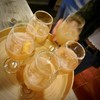



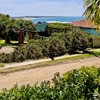

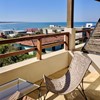
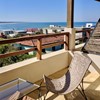


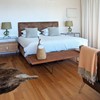

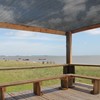















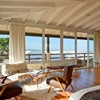







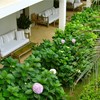





















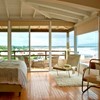
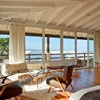
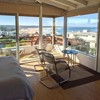


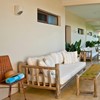


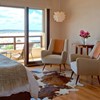
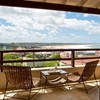




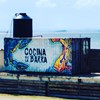
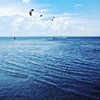
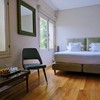



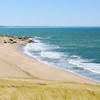


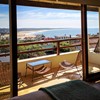








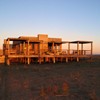
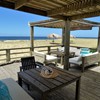



Cliff Jacobs (Nat Dpl Hotel Man (UJ). MPRE. GA Level 5 TEFL) Managing Principal / CEO Exquisite Hotel Consultants (Pty) Ltd Mobile: +27 (0) 67 587 2532 (voice calls) Mobile: +27 (0) 84 413 1071 (WhatsApp voice calls and chats only) / +27 (0) 61 716 6951 (WhatsApp voice calls and chats only) Email: cliff@exquisitehotelconsultants.com Web: https://www.exquisitehotelconsultants.com © All rights reserved Terms and Conditions apply Scroll down to view our Hospitality Properties and Businesses for sale or lease or lease-to-buy or partnership arrangement or management agreement arrangement.